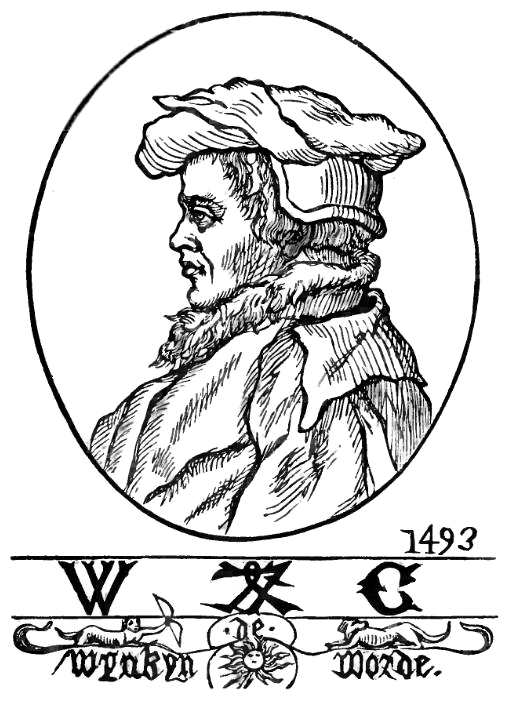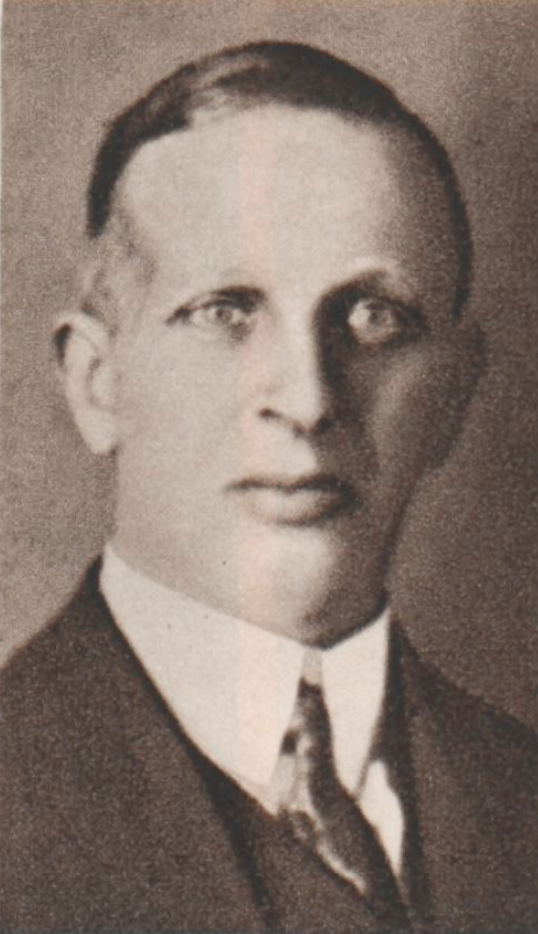|
Treatise Of Love
The ''Treatise of Love'' (''Tretyse of Loue'') is an English prose text first printed around 1493. Its printing was the work of Wynkyn de Worde, who took over William Caxton's printing business in 1491, and printed the ''Treatise'' before he began publishing under his own name in 1494. Drawing greatly on the ''Ancrene Wisse'', the text contains religious advice addressed to an audience of aristocratic women. Contents The text contains three main parts that deal with divine love, which are largely based on the early thirteenth-century ''Ancrene Wisse'', and, following an "intermediate conclusion," seven brief sections dealing with other aspects of (religious) love. Besides the ''Ancrene Wisse'', other source texts are the '' Planctus Mariae'' (usually ascribed to Bernard of Clairvaux) and the ''Hours of the Cross'' from the ''Meditations on the Life of Christ''. Like the ''Ancrene Wisse'', its religious advice is written for the purpose of aristocratic women (one specific but unknow ... [...More Info...] [...Related Items...] OR: [Wikipedia] [Google] [Baidu] |
Wynkyn De Worde
Wynkyn de Worde (died 1534) was a printer and publisher in London known for his work with William Caxton, and is recognised as the first to popularise the products of the printing press in England. Name Wynkyn de Worde was a German immigrant to England. His name is given in the forms ''Wynkyn de Worde'', ''Wynken de Worde'', ''Wynkyn de Word'', ''Wijnkijn de Worde'', and ''Winandus van Worden'' ("Wynkyn" is a diminutive of "Wynand"). It is also given 15 times in the sacrist's roll of Westminster Abbey and in city records as variants of "John Wynkyn", including ''John Wynkyn'', ''Johannes Wynkyn'', ''Jan Wynkyn'', and ''Jan van Wynkyn''. He is also recorded as ''Willelmo Wynkyn'' ("William Wynkyn") once and as ''Mr. Wylkyns'' eight times. His son Richard is recorded as ''Richard Wynkyn'' and ''Rycharde de Worde''. Some authors have therefore concluded that his real name was John Wynkyn (or Wynand) and that "de Worde" was "merely a place name," while others have concluded tha ... [...More Info...] [...Related Items...] OR: [Wikipedia] [Google] [Baidu] |
Cambridge University
, mottoeng = Literal: From here, light and sacred draughts. Non literal: From this place, we gain enlightenment and precious knowledge. , established = , other_name = The Chancellor, Masters and Scholars of the University of Cambridge , type = Public research university , endowment = £7.121 billion (including colleges) , budget = £2.308 billion (excluding colleges) , chancellor = The Lord Sainsbury of Turville , vice_chancellor = Anthony Freeling , students = 24,450 (2020) , undergrad = 12,850 (2020) , postgrad = 11,600 (2020) , city = Cambridge , country = England , campus_type = , sporting_affiliations = The Sporting Blue , colours = Cambridge Blue , website = , logo = University of Cambridge logo ... [...More Info...] [...Related Items...] OR: [Wikipedia] [Google] [Baidu] |
Seymour De Ricci
Seymour de Ricci (1881-1942) was a bibliographer and historian, who was born in England and raised and became a citizen of France. Early years Seymour Montefiore Robert Rosso de Ricci was born in 1881 in Twickenham, United Kingdom. His parents were Helen Montefiore (c. 1860–1931) and James Herman de Ricci (1847–1900). He lived with his mother in Paris after 1890, when his parents divorced. His father was a colonial judge and a lawyer. Education and early career Between 1890 and 1898, de Ricci attended the Lycée Janson de Sailly. He attended and subsequently received his bachelier ès lettres from École pratique des hautes études, Sorbonne in 1897. He went to Côtes-du-Nord, Brittany where he studied Roman inscriptions. He met Salomon Reinach, who would be a close friend and mentor, and Émile Guimet. He took an inventory of the inscriptions and published his first book about them in 1897. In 1901 he received his licence. He was a private scholar of epigraphy, Egyptolo ... [...More Info...] [...Related Items...] OR: [Wikipedia] [Google] [Baidu] |
William Tyssen-Amherst, 1st Baron Amherst Of Hackney
William Amhurst Tyssen-Amherst, 1st Baron Amherst of Hackney, (25 April 1835 – 16 January 1909) was a British Conservative Member of Parliament and collector of books and works of art. Background and education Born William Amhurst Daniel-Tyssen, he was the eldest son of William George Daniel-Tyssen, High Sheriff of Norfolk in 1843, who was the son of William George Daniel, of Foley House, near Maidstone, Kent, High Sheriff of Kent in 1825, and his wife Amelia Amherst, the daughter of Captain John Amherst and Mary Tyssen, heiress of Foulden Hall, Norfolk. Amherst's mother was Mary, daughter of Andrew Fountaine, of Narford Hall, Norfolk. In 1852, he and his father assumed by Royal licence the surname of Tyssen-Amhurst. However, in 1877 he again changed it, to Tyssen-Amherst, also by Royal licence. Tyssen-Amherst was educated at Eton and Christ Church, Oxford. Political career In 1880, he was elected to Parliament for West Norfolk, a seat he held until 1885, and then represent ... [...More Info...] [...Related Items...] OR: [Wikipedia] [Google] [Baidu] |
Heneage Finch, 5th Earl Of Aylesford
Heneage Finch, 5th Earl of Aylesford (24 April 1786 – 3 January 1859) was a British peer, the eldest son of Heneage Finch, 4th Earl of Aylesford. He was styled Lord Guernsey until he succeeded his father in 1812. Aylesford married in 1821 Augusta Sophia Greville, daughter of George Greville, 2nd Earl of Warwick. His children included Augusta Finch who was born in 1822 and be came a philanthropist and Countess of Dartmouth.K. D. Reynolds, 'Legge , Augusta, countess of Dartmouth (1822–1900)’, Oxford Dictionary of National Biography, Oxford University Press, 200accessed 12 March 2017/ref> He was High Steward of Sutton Coldfield The High Steward of Sutton Coldfield was an office relating to the government of the town of Sutton Coldfield, Warwickshire, England. History Prior to the Royal Charter of 1528 Walter Devereux, Lord Ferrers of Chartley held the office of High St ... from 1835 until his death. References * * External links * 1786 births 1859 deat ... [...More Info...] [...Related Items...] OR: [Wikipedia] [Google] [Baidu] |
The Morgan Library & Museum
The Morgan Library & Museum, formerly the Pierpont Morgan Library, is a museum and research library in the Murray Hill neighborhood of Manhattan in New York City. It is situated at 225 Madison Avenue, between 36th Street to the south and 37th Street to the north. The Morgan Library & Museum is composed of several structures. The main building was designed by Charles McKim of the firm of McKim, Mead and White, with an annex designed by Benjamin Wistar Morris. A 19th-century Italianate brownstone house at 231 Madison Avenue, built by Isaac Newton Phelps, is also part of the grounds. The museum and library also contains a glass entrance building designed by Renzo Piano and Beyer Blinder Belle. The main building and its interior is a New York City designated landmark and a National Historic Landmark, while the house at 231 Madison Avenue is a New York City landmark. The site was formerly occupied by residences of the Phelps family, one of which banker J. P. Morgan had purchased in ... [...More Info...] [...Related Items...] OR: [Wikipedia] [Google] [Baidu] |
Early English Text Society
The Early English Text Society (EETS) is a text publication society founded in 1864 which is dedicated to the editing and publication of early English texts, especially those only available in manuscript. Most of its volumes contain editions of Middle English or Old English texts. It is known for being the first to print many important English manuscripts, including Cotton Nero A.x, which contains ''Pearl'', ''Sir Gawain and the Green Knight'', and other poems. History The Society was founded in England in 1864 by Frederick James Furnivall. Its stated goal was "on the one hand, to print all that is most valuable of the yet unprinted in English, and, on the other, to re-edit and reprint all that is most valuable in printed English books, which from their scarcity or price are not within the reach of the student of moderate means." As of 2020, the Society had published 354 volumes in its Original Series; 126 volumes in its Extra Series, published between 1867 and 1935, comprisi ... [...More Info...] [...Related Items...] OR: [Wikipedia] [Google] [Baidu] |
Bishop Of Ely
The Bishop of Ely is the ordinary of the Church of England Diocese of Ely in the Province of Canterbury. The diocese roughly covers the county of Cambridgeshire (with the exception of the Soke of Peterborough), together with a section of north-west Norfolk and has its episcopal see in the City of Ely, Isle of Ely in Cambridgeshire, where the seat is located at the Cathedral Church of the Holy Trinity. The current bishop is Stephen Conway, who signs ''+Stephen Elien:'' (abbreviation of the Latin adjective ''Eliensis'', meaning "of Ely"). The diocesan bishops resided at the Bishop's Palace, Ely until 1941; they now reside in Bishop's House, the former cathedral deanery. Conway became Bishop of Ely in 2010, translated from the Diocese of Salisbury where he was Bishop suffragan of Ramsbury. The roots of the Diocese of Ely are ancient and the area of Ely was part of the patrimony of Saint Etheldreda. Prior to the elevation of Ely Cathedral as the seat of the diocese, it existe ... [...More Info...] [...Related Items...] OR: [Wikipedia] [Google] [Baidu] |
William Caxton
William Caxton ( – ) was an English merchant, diplomat and writer. He is thought to be the first person to introduce a printing press into England, in 1476, and as a printer (publisher), printer to be the first English retailer of printed books. His parentage and date of birth are not known for certain, but he may have been born between 1415 and 1424, perhaps in the Weald or wood land of Kent, perhaps in Hadlow or Tenterden. In 1438 he was apprenticed to Robert Large, a wealthy London silk Mercery, mercer. Shortly after Large's death, Caxton moved to Bruges, Belgium, a wealthy cultured city in which he was settled by 1450. Successful in business, he became governor of the Company of Merchant Adventurers of London; on his business travels, he observed the new printing industry in Cologne, which led him to start a printing press in Bruges in collaboration with Colard Mansion. When Margaret of York, sister of Edward IV, married the Charles the Bold, Duke of Burgundy, they moved ... [...More Info...] [...Related Items...] OR: [Wikipedia] [Google] [Baidu] |
John Moore (bishop Of Ely)
John Moore (1646–1714) was Bishop of Norwich (1691–1707) and Bishop of Ely (1707–1714) and was a famous bibliophile whose vast collection of books forms the surviving "Royal Library" within Cambridge University Library. Origins Bishop John Moore was descended from the ancient family of De La Moor (later Moore), of Moore Hayes in the parish of Cullompton in Devonshire, England. He was born in Market Harborough in Leicestershire, the son of Thomas Moore (1621–1686), an ironmonger of Market Harborough, by his wife Elizabeth Wright, daughter of Edward Wright of Sutton in the parish of Broughton, Leicestershire. The Bishop's paternal grandfather was Rev. John Moore (c.1595–1657) a clergyman of Puritan views and an author of pamphlets against enclosures, who was a younger son of Sir John Moore of Moor Hayes, knighted at the Palace of Westminster by King Edward VI in 1549, by his wife Katherine Pomeroy, a daughter of Sir Thomas Pomeroy (1503-1566), feudal baron of Berry Pome ... [...More Info...] [...Related Items...] OR: [Wikipedia] [Google] [Baidu] |
Passion (Christianity)
In Christianity, the Passion (from the Latin verb ''patior, passus sum''; "to suffer, bear, endure", from which also "patience, patient", etc.) is the short final period in the life of Jesus Christ. Depending on one's views, the "Passion" may include, among other events, Jesus' triumphal entry into Jerusalem, his cleansing of the Temple, his anointing, the Last Supper, Jesus' agony in the Garden, his arrest, his Sanhedrin trial, his trial before Pontius Pilate, his crucifixion and his death on Good Friday, his burial, and the resurrection of Jesus. Those parts of the four canonical Gospels that describe these events are known as the "Passion narratives". In some Christian communities, commemoration of the Passion also includes remembrance of the sorrow of Mary, the mother of Jesus, on the Friday of Sorrows. The word ''passion'' has taken on a more general application and now may also apply to accounts of the suffering and death of Christian martyrs, sometimes using the ... [...More Info...] [...Related Items...] OR: [Wikipedia] [Google] [Baidu] |









